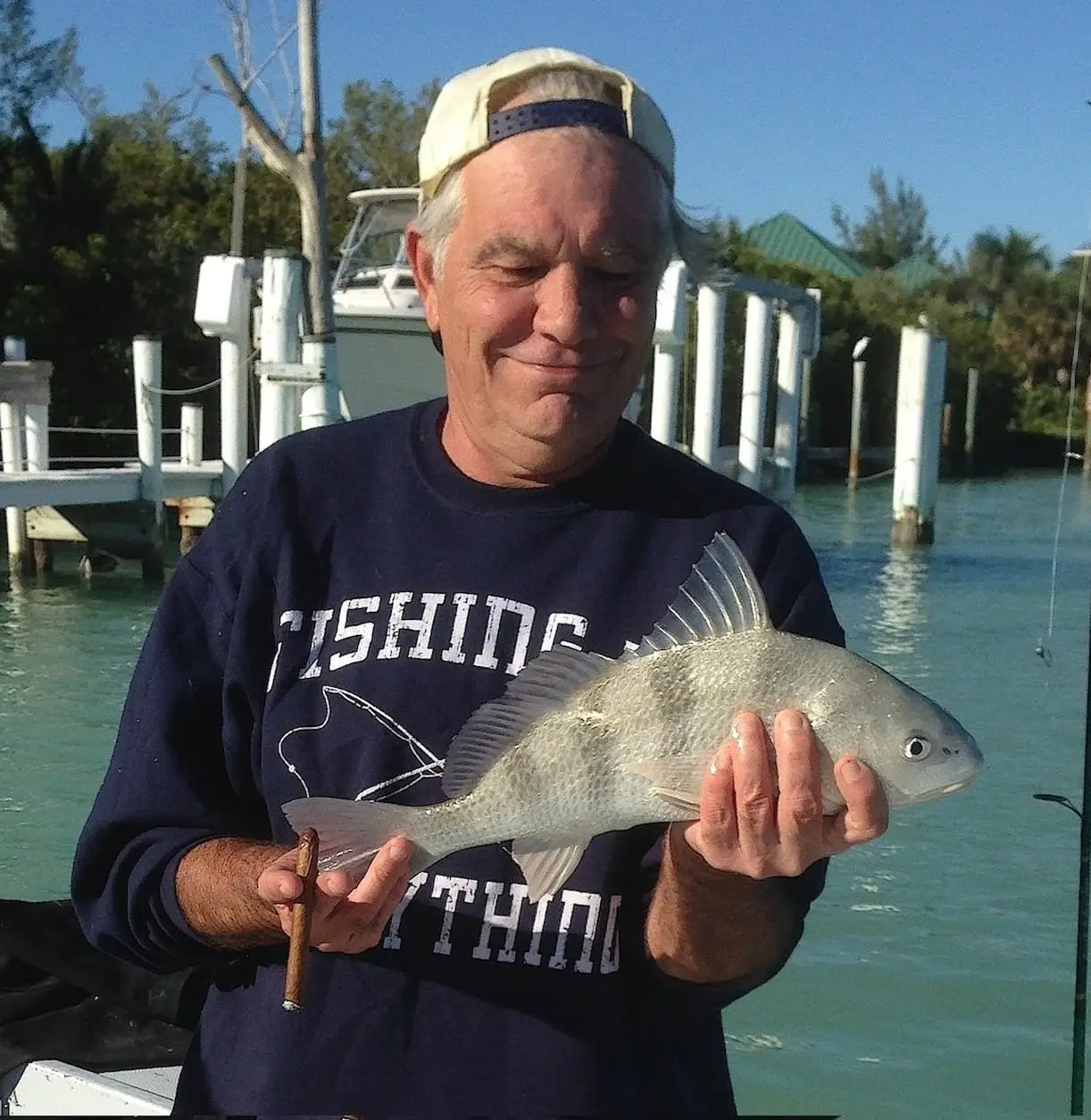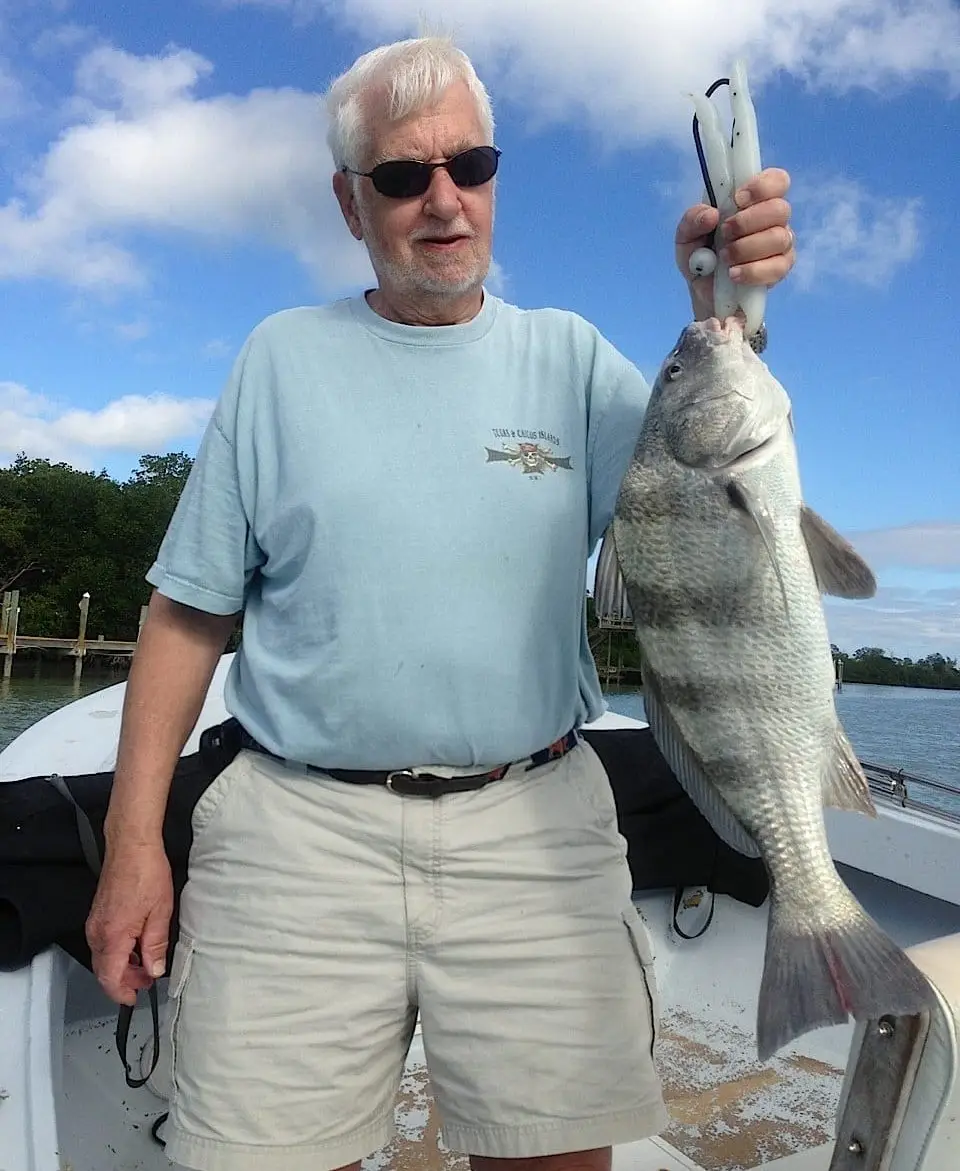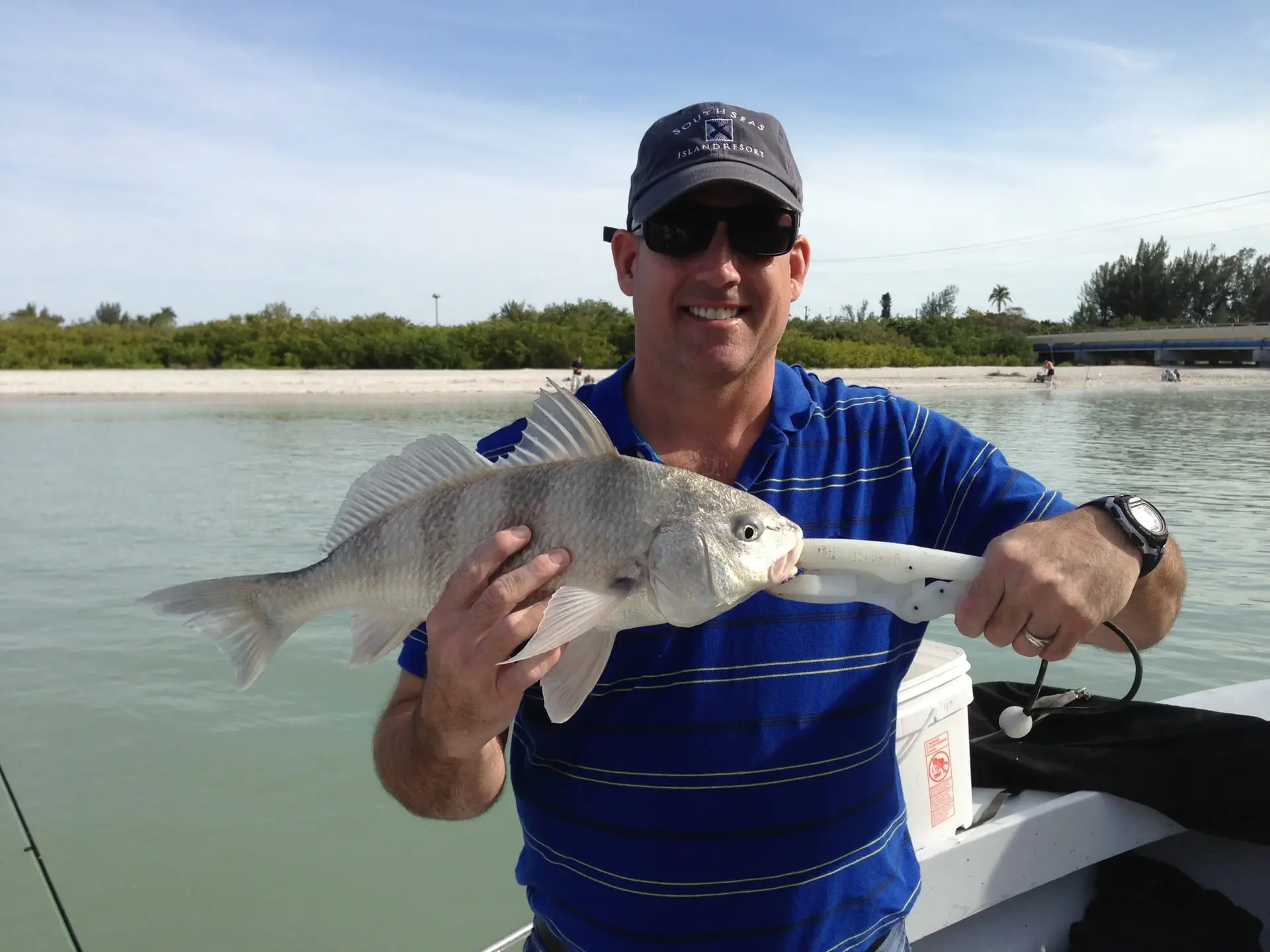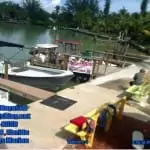

Sanibel Fishing & Captiva Fishing, Black Drum.

Sanibel Fishing & Captiva Fishing, Captiva Island, Sunday, April 30: Black Drum inshore, usually a fall-winter fish, but we sometimes catch Black Drum as late as May; latest Red Tide Report; better water moving north of Sanibel up through Captiva & North Captiva. Please click here to Book A Charter or call 239-472-8658.
We’re located at Castaways Marina, Santiva, Sanibel Island, just before the Blind Pass bridge to Captiva Island.
For more photos and/or fishing reports from our other Captains’ boats from other marinas, please also visit our Sanibel, Fort Myers, Seashell & Shelling, Florida Fishing Report and Cuban Fishing sites. Please check here for Live Sanibel Traffic Cams. Click here for College Of Fishing Hats & Apparel.

“The black drum (Pogonias cromis), also known as “Blue Drum” for its dark and hint of blue color, is a saltwater fish similar to its cousin, the red drum. It is the only species in the genus Pogonias. Though most specimens are generally found in the 5-30 lb (2–14 kg) range, the black drum is well known as the largest of all the drum family with some specimens reaching excesses of 90 lb (40 kg). The world record black drum was just over 113 lb (51 kg).

Black drum are often black and/or gray in color with juvenile fish having distinctive dark stripes over a gray body. Their teeth are rounded and they have powerful jaws capable of crushing oysters and other shellfish. It is recommended those over 15 lb pounds (7 kg) should be released. Black drum are capable of producing tones between 100 Hz and 500 Hz when performing mating calls.

The black drum is usually found in or near brackish waters. Larger, older fish are more commonly found in the saltier areas of an estuary (closer to the ocean) near oyster beds or other plentiful food sources. Juvenile fish have 4 to 5 bold vertical black bars on a light background and can be mistaken for Sheepshead at first glance, but are distinguished on closer inspection because sheepshead have teeth and black drum have chin barbells. These stripes usually fade to dull gray as the fish grow from 12 to 24 inches in length. Juvenile fish are more commonly found in less salty areas and relate more strongly to structure and cover. In the western Atlantic, black drum

Juvenile fish are more commonly found in less salty areas and relate more strongly to structure and cover. In the western Atlantic, black drum are found from Nova Scotia to Florida, the Gulf of Mexico, the Antilles (uncommon), and the southern Caribbean coast; also from the Orinoco delta to Argentina.[1] They are common between the Delaware Bay and Florida coasts and most abundant along the Texas coast. After reaching maturity by the end of their second year, black drum spawn in and around estuarine waters. In Texas, most spawning takes place in February and March.[2]

Black drum larvae eat mostly zooplankton, and young black drum (less than 20 cm long) eat worms and small fish. Black drum are mostly bottom feeders, with adults eating mostly mollusks and crabs. In shallow water, they have been reported to feed with their heads down so that their tails show above the water surface. Their sensitive chin barbels help locate food, and strong pharyngeal teeth crush the shells of these preferred foods. It has been reported that, in captivity, large drum were able to eat more than two commercial-sized oysters per kilogram of body weight each day.

It has been reported that, in captivity, large drum were able to eat more than two commercial-sized oysters per kilogram of body weight each day.[3] This translates into the potential for a 20 kg drum (about 45 lb) to eat 40 oysters a day. Fishing advice for black drum along the east and southeast coasts of the United States often includes the suggestion to locate an oyster bed. However, this preference has also caused black drum to be a nuisance for those who raise oysters commercially.[4] A group of black drum can do great damage to an oyster bed in a single day.

Annual growth rate for ages 1–3 is 100–150 mm/year-1and then slows to 10–50 mm/year for ages 10–20.[6] Studies have reported black drum weighing more than 60 kg on the Atlantic coast and they are believed to live up to 60 years. Other studies suggest that black drum in the Gulf of Mexico do not grow as large or live as long; in a sample of 1357 black drum from coastal Louisiana, the largest individual was 22.6 kg and the oldest was 44 years.[7]
 Black drum are bottom feeders, so they are most commonly caught with bait either on the bottom or suspended within a couple feet off the bottom. Bottom fishing methods are used both in surf fishing and inshore fishing.[11] Shrimp is a typical bait that works well; squid can also be used and is less subject to bait stealing by hardhead catfish and Atlantic croakers which often frequent the same waters. There are times when the older, larger fish are more readily caught on a half or a quarter of a
Black drum are bottom feeders, so they are most commonly caught with bait either on the bottom or suspended within a couple feet off the bottom. Bottom fishing methods are used both in surf fishing and inshore fishing.[11] Shrimp is a typical bait that works well; squid can also be used and is less subject to bait stealing by hardhead catfish and Atlantic croakers which often frequent the same waters. There are times when the older, larger fish are more readily caught on a half or a quarter of a

There are times when the older, larger fish are more readily caught on a half or a quarter of a blue crab with the top shell removed and cut or broken to fit on a 4/0 to 9/0 hook. This type of fishing is often combined with chumming, a baiting practice that involves scattering bits of fish parts and blood into the water as an attractant.[12] Sometimes black drum are caught on spoons and jigs.

Black drum are reported to mouth a natural bait, so anglers need to wait a few seconds before setting the hook.[13] Once a big adult drum grabs the bait, it takes off with gusto and can put up quite a fight. An unsecured rod can easily be pulled into the water. Landing these big fish on light tackle can be challenging, and since drum are primarily scent-based feeders, there is little disadvantage in using heavier line and tackle. A 40-lb braided line with a comparable weight fluorocarbon leader is a good compromise between castability and strength. However, big drum are frequently caught with everything from 8-lb monofilament to 100-lb braided lines with heavy steel leaders.

An effective strategy for fishing from a boat is to select a spot with a sandy bottom or oyster bed where food is plentiful at a time of day with some tidal movement. Pier or bank fishing should target jetties, structure, or a boat channel near a rapid increase in depth and some tidal movement. With stout tackle, black drum above 10 lb are relatively easy for children to catch because they are not particularly skittish and do not easily come off once they are hooked. Because bigger drum can make a long, strong run right after taking the bait, preventing broken line often requires a relatively light drag setting early in the fight.

One researcher reported good success with trotline fishing techniques, which he used to catch a large sample of black drum for tagging and scientific study.[14]

Black drum are edible, with a moderate flavor and are not oily. Some restaurants in the southern US serve smaller black drum. A big drum can be challenging to clean; removing the large scales is a challenge. Many fishermen prefer to fillet with an electric knife, first removing the fillet from along the backbone, and then using the electric knife to cut the fillet from the skin and scales. Fish over 15 lb can become tough and have a consistency comparable with chicken, rather than the flaky texture of many species of fish. Younger fish are often indistinguishable in flavor from red drum.[15] More background here.

We’re big advocates of catch and release, particularly for snook, but pretty much for most species. Only take what you are going to eat, and a lot of fish are better off as sportfish, even if they are in season. Our motto is let ‘em get bigger and catch ‘em again!
Please click calendar at upper right or call 239-472-8658 to book a charter.

Whether you’re a longtime customer who has fished with us for many years or a first-time customer, expert fisherman or just a family with young children out to catch fish and have fun, you are going to enjoy being out in the boat with Hank and me! We greatly appreciate your friendship and business!
We grew up on Sanibel and Captiva fishing and shelling every day! It is what we know and do well! If you had a good time fishing with Captain Joey Burnsed on a Sanibel & Captiva charter, please post an “excellent” review on Google Places, TripAdvisor, Yelp, or Facebook! If you had any issues at all with your charter, please let us know immediately and we’ll do everything we can to make it right! Huge thanks for doing this!
And you can like us on Facebook.
Fair winds and following seas,
Captain Joey Burnsed ~ please click calendar at the upper left or call 239-472-8658 to book a Sanibel & Captiva Islands, Boca Grande or Fort Myers fishing guide trip or shelling charter.




